Lunar cycle and Water deer’s occurrence
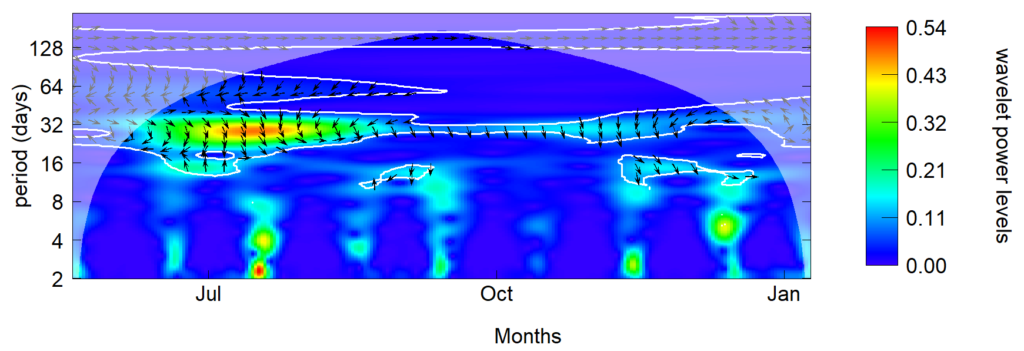
Highest correlation between occurrence of the water deer and the moon is between July and August.
Arrows direction indicates the peak of occurrence is slightly before New Moon.
Occurrence of water deer during night per moon phases
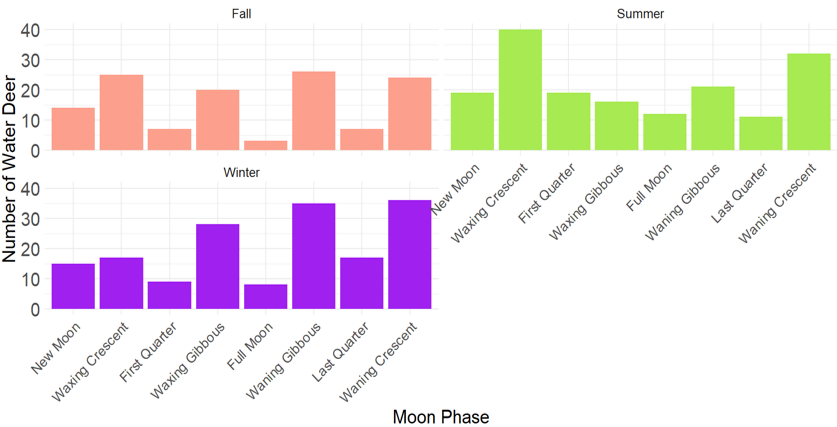
During Fall , water deer doesn’t show a strong preference for dark or bright night.
During Summer, the water deer occurred more during dark night (waxing crescent, waning crescent)
During Winter, water deer generally prefer brighter night (waxing gibbous, waning gibbous) with a peak of occurrence during waning crescent (dark night).
Moon influence on the behaviours
There is no significant difference of activity budget between each moon phases.
The closely similar amount of feeding time between the full moon and new moon could imply that the moon phase doesn’t influence the activity budget of water deer.
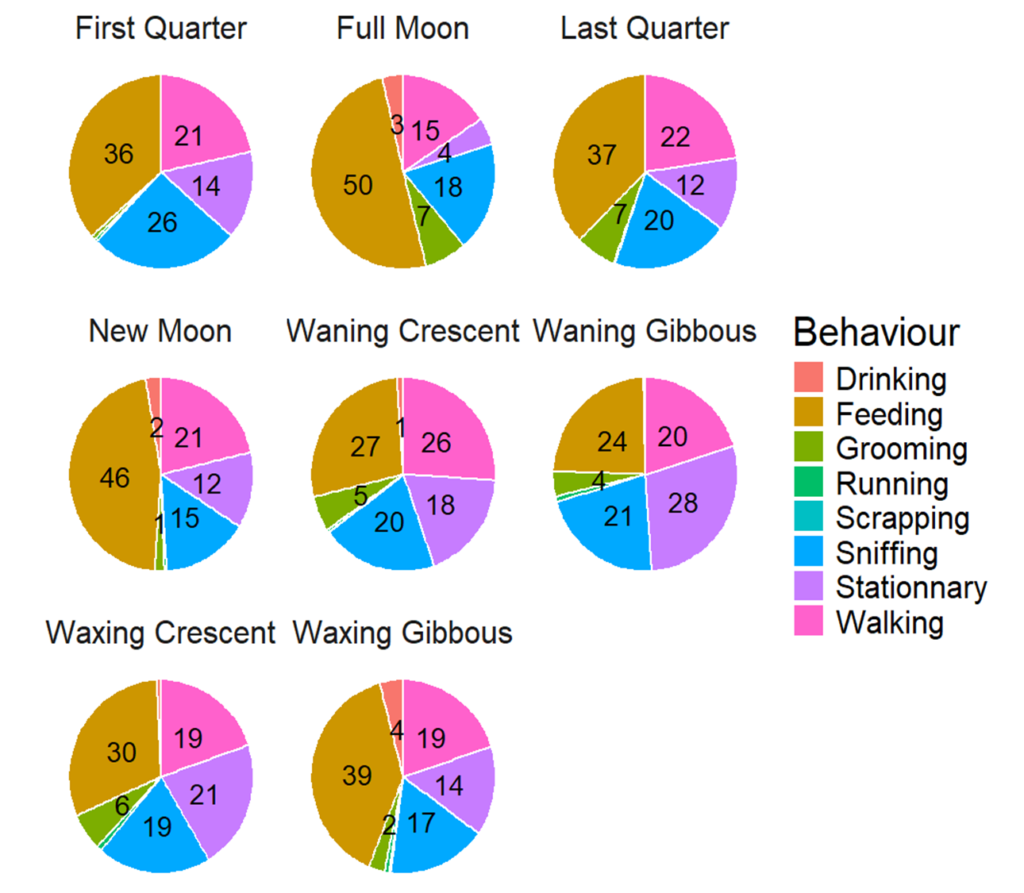
Influence of the other variables on the water deer occurrence
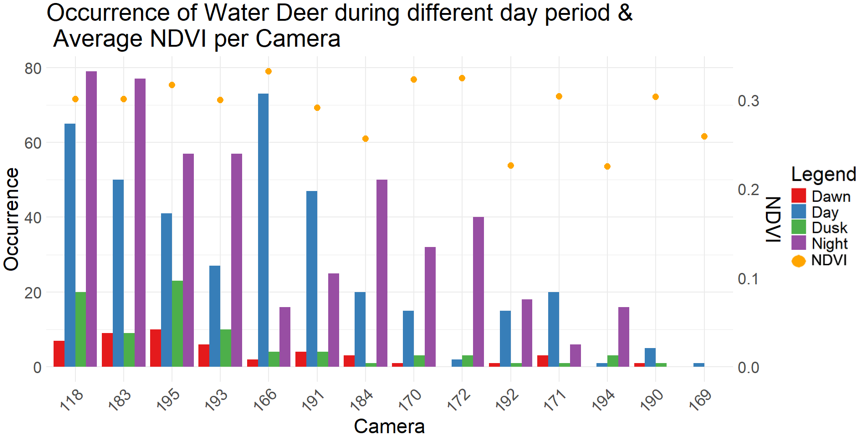
The water deer visited preferably the camera 166, 171 and 191 during the day and all other cameras are visited more frequently at night.
The average vegetation density (NDVI) from the 8 months is higher around camera 166, 170 and 172. When focussing on the overall most frequently visited cameras, they have nearly the same average NDVI (between 0.30 and 0.32).
Common environmental characteristics for frequently visited camera (118, 183) seems to include immediate proximity with field, forest, and wetland.
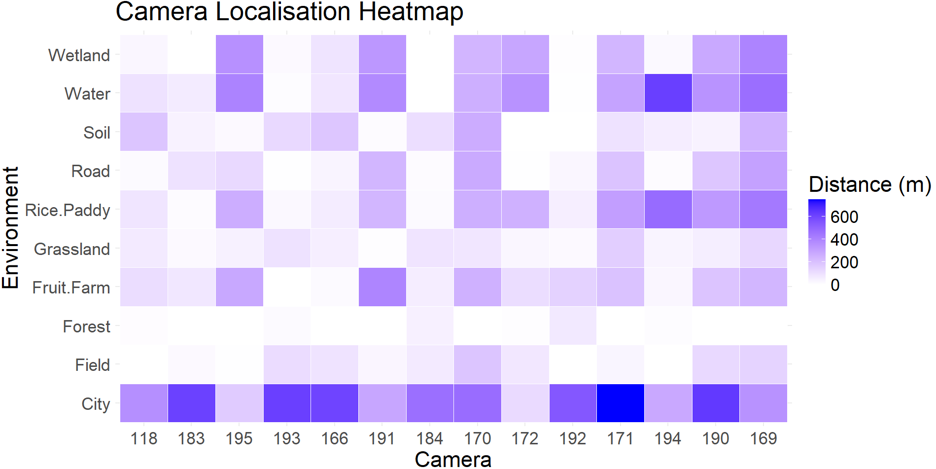

The significant difference between when there is water deer’s occurrence or not are rainfall and sunlight. There is significantly more chance of water deer to appear on camera when there is important rainfall and during day that have less than 7 hours sunlight.
The average number of visitors and vehicles was close to 0 when the water deer occurred, with a maximum of 50 visitors and 19 vehicles. When no occurrence has been noted, the average visitor numbers was around 20 visitors, and the maximum was slightly over 100 visitors in a day. The average of vehicles per day is 10 with a maximum of 28 vehicles. The human disturbance significantly affected the presence of the water deer.